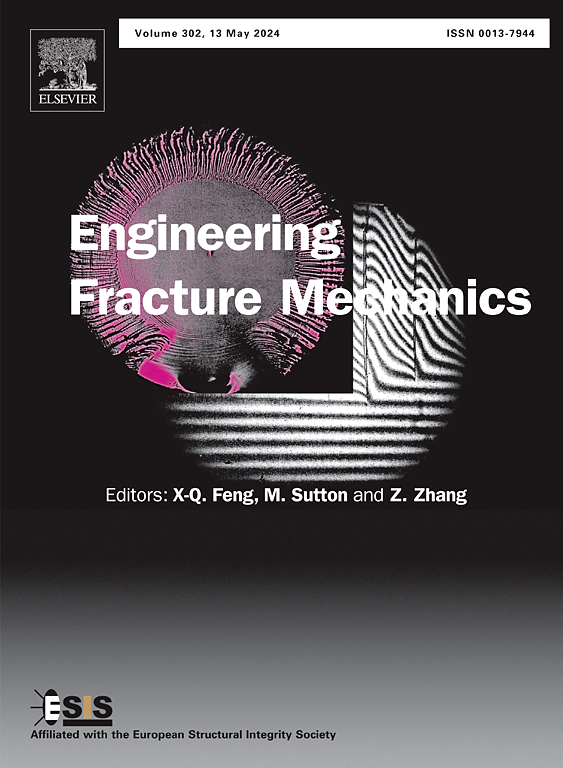煤岩复合材料在冲击荷载作用下的动态响应和构成模型
IF 5.3
2区 工程技术
Q1 MECHANICS
引用次数: 0
摘要
全面了解复合材料的动态响应对于预防地下工程和采矿活动中的自然灾害至关重要。为此,我们利用分体式霍普金森压力棒(SHPB)系统和数字图像关联(DIC)对复合材料(煤-岩(C-R)和岩-煤(R-C))进行了不同应变速率的动态冲击试验,以探索其破坏机制。这些结果表明,耗散能与分形尺寸之间存在线性相关。此外,这些结果表明,主要在煤一侧产生的裂缝对破坏过程有主要影响,这可能归因于界面效应。利用三维耦合 FDM-DEM 数值模拟系统,在假设弹性条件下确定了损伤演变过程。此外,还开发了一种数值方法,用于根据织物张量和应变能密度解释复合材料的破坏机制。最后,考虑到应变率效应和损伤演变,利用系列元素研究建立了构成关系。实验结果与数值结果之间存在良好的一致性,为所提出的构成关系提供了依据。本研究中的数值方法有望在考虑动态加载条件的情况下评估复合材料的性能。本文章由计算机程序翻译,如有差异,请以英文原文为准。
Dynamic response and constitutive model for coal-rock composite material subjected to impact loading
Comprehensive understanding related to the dynamic responses of the composite materials is critical to prevent natural disasters in underground engineering and mining activities. For this reason, experimental studies were undertaken using dynamic impact tests at different strain rates to explore the failure mechanism using split Hopkinson pressure bar (SHPB) system and Digital Image Correlation (DIC) on composite materials; coal-rock (C-R) and rock-coal (R-C). These results suggest a linear correlation between dissipative energy and fractal dimensions. In addition, they suggest cracks that develop predominantly on the coal side have a dominant influence on the failure process that could be attributed to the interface effects. The damage evolution was established assuming elastic conditions using a three-dimensional coupled FDM-DEM numerical simulation system. A numerical approach is also developed for interpreting failure mechanism of the composite material based on the fabric tensor and strain energy density. Finally, a constitutive relationship is established considering strain rate effect and damage evolution using series element studies. There is a good agreement between the experimental and numerical results, providing justification to the proposed constitutive relationship. The numerical approach in this study is promising for assessing the performance of composite materials taking account of dynamic loading conditions.
求助全文
通过发布文献求助,成功后即可免费获取论文全文。
去求助
来源期刊
CiteScore
8.70
自引率
13.00%
发文量
606
审稿时长
74 days
期刊介绍:
EFM covers a broad range of topics in fracture mechanics to be of interest and use to both researchers and practitioners. Contributions are welcome which address the fracture behavior of conventional engineering material systems as well as newly emerging material systems. Contributions on developments in the areas of mechanics and materials science strongly related to fracture mechanics are also welcome. Papers on fatigue are welcome if they treat the fatigue process using the methods of fracture mechanics.

 求助内容:
求助内容: 应助结果提醒方式:
应助结果提醒方式:


